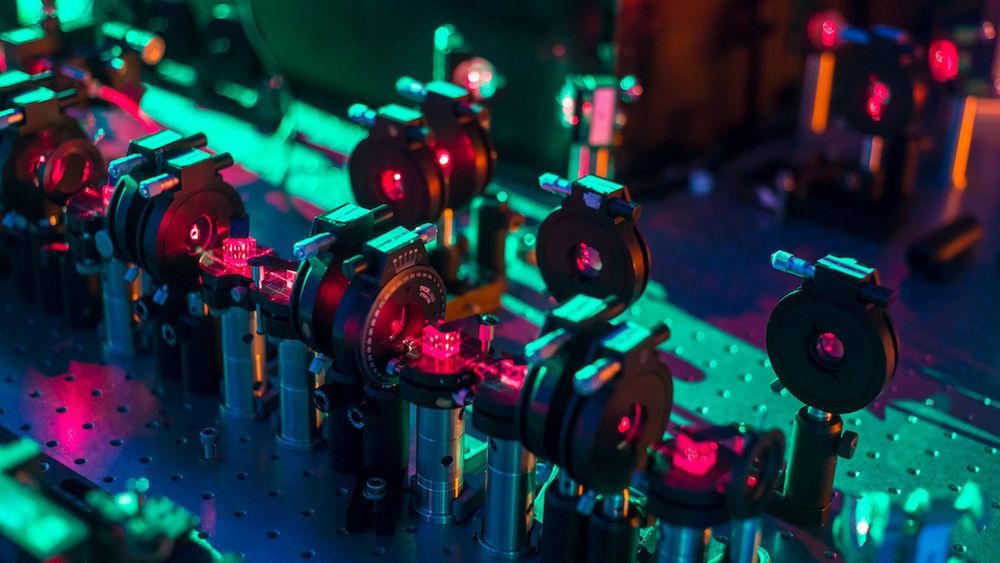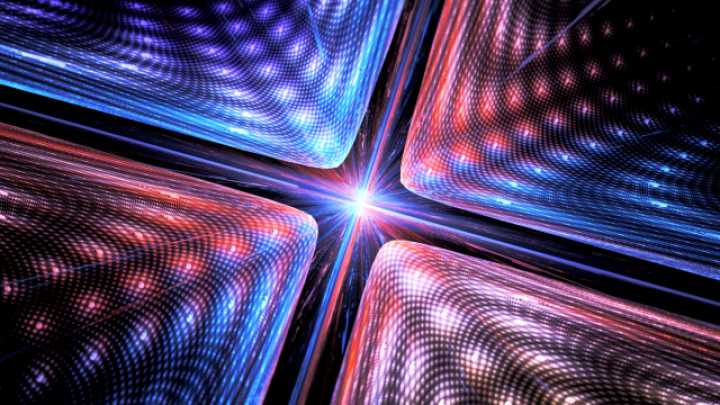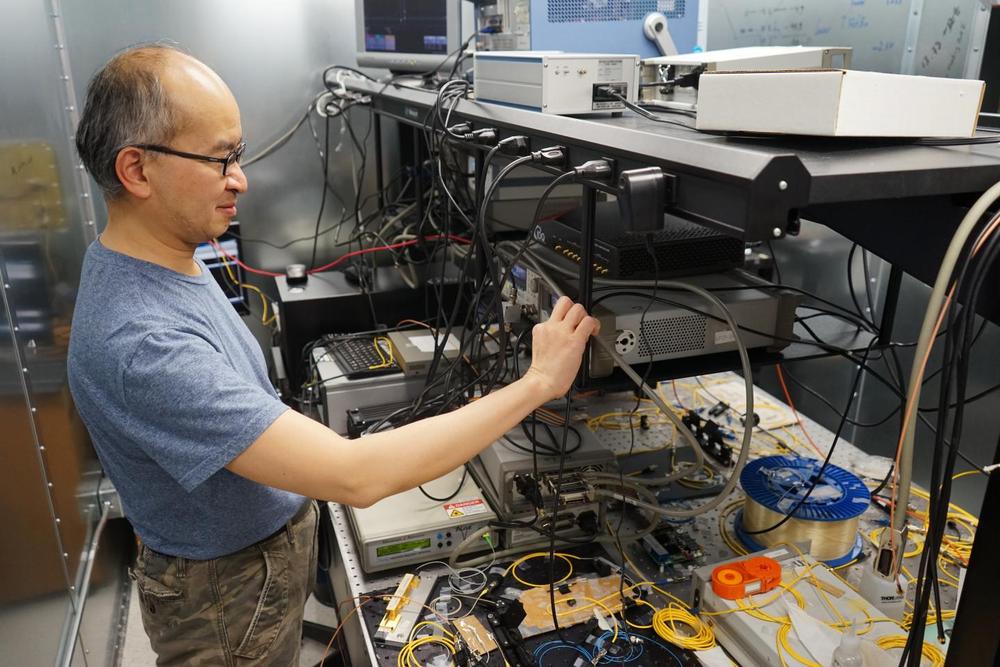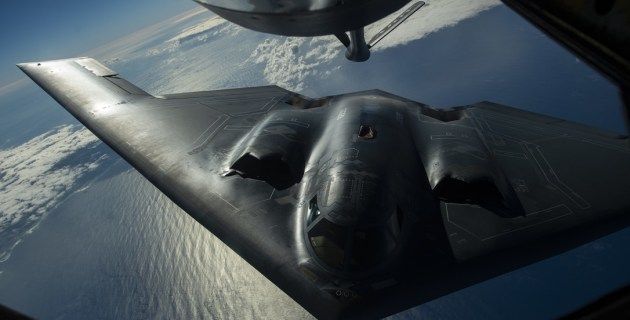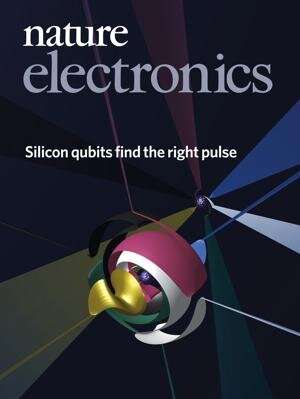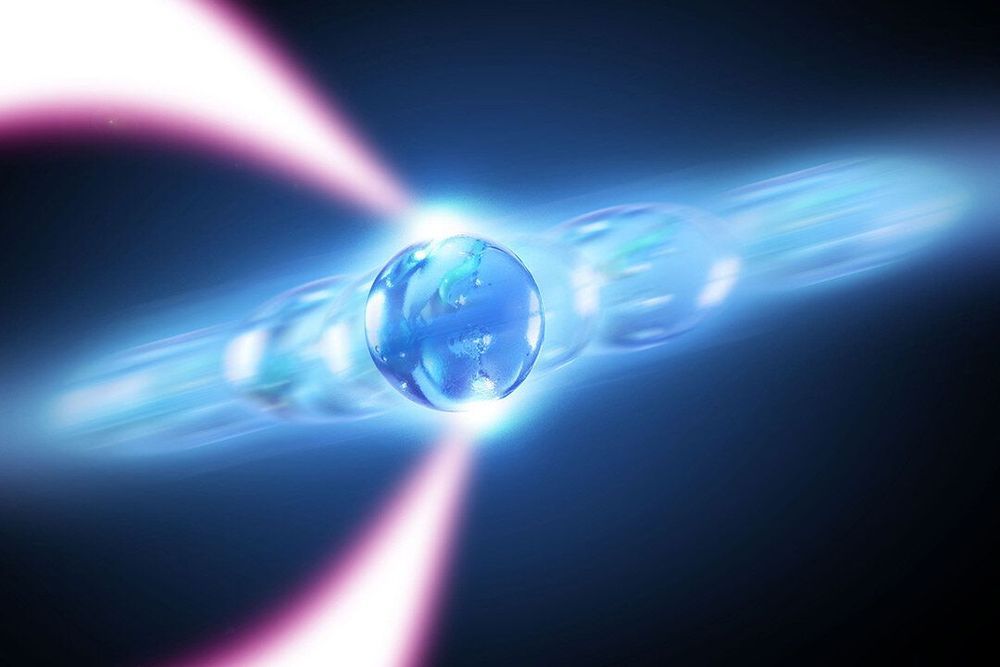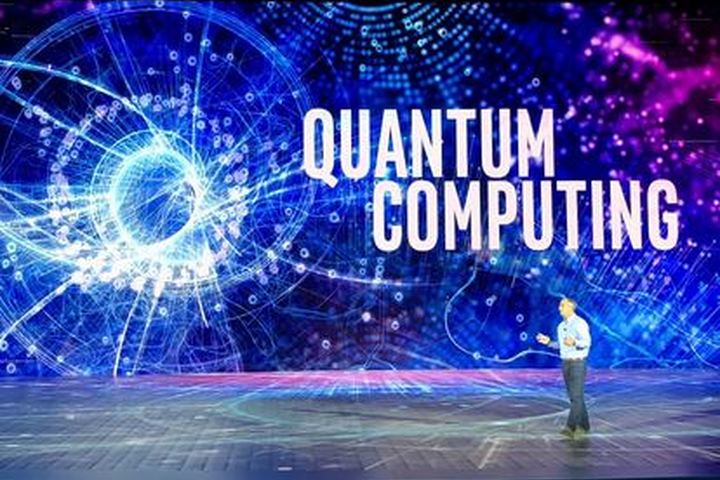Researchers have built a quantum computer prototype that can show 16 possible futures at the same time.
Category: quantum physics – Page 717
Maxwell’s demon is a machine proposed by James Clerk Maxwell in 1897. The hypothetical machine would use thermal fluctuations to obtain energy, apparently violating the second principle of thermodynamics. Now, researchers at the University of Barcelona have presented the first theoretical and experimental solution of a continuous version of Maxwell’s demon in a single molecule system. The results, published in the journal Nature Physics, have applications in other fields, such as biological and quantum systems.
“Despite its simplicity and the large amount of work in the field, this new variant of the classical Maxwell demon has remained unexplored until now,” notes F\xE8lix Ritort, professor from the Department of Fundamental Physics of the UB. “In this study, we introduced a system able to extract large amounts of work arbitrarily per cycle through repeated measurements of the state of a system.”
:oo.
We usually think of microwaves as waves that heat things up, usually leftover food, but did you know that they can also cool things down? For example, physicists recently decided to use them to freeze atoms, and attempts have been very successful: They managed to cool them down to within a millionth of a degree of absolute zero (–273.15°C or −459.67°F).
The University of Sussex team, led by Winifried Hensinger, had their results published in Physical Review Letters.
“The use of long-wavelength radiation instead of laser technology to cool ions can tremendously simplify the construction of practical quantum technology devices enabling us to build real devices much faster,” said Professor Hensinger.
The goal of a worldwide “quantum internet” could be one step closer thanks to new experiments by researchers in Japan and Canada who have made the first ever quantum repeaters that work using an all-photonic protocol. The scheme importantly allows for the time-reversed adaptive Bell measurement, which is a key component for all-photonic quantum repeaters. It is based on optical devices alone and does not require any quantum memories or quantum error correction.
The Internet as we know it was not designed to be secure, and hacking, break-ins and espionage are unfortunately par for the course today. A quantum internet would be much more secure – as well as being much faster – since it exploits key features of quantum physics such as quantum entanglement.
Entanglement and quantum memories.
Now, almost 100 years later, the Department of Defence, through its Next Generation Technology Fund, has selected 11 projects that exploit the extraordinary properties of quantum mechanics to deliver improved security for Australians. The Institute for Photonics and Advanced Sensing (IPAS) at the University of Adelaide is involved in four of these ambitious projects.
IPAS will work closely with the Defence Science and Technology (DST) Group on four ambitious quantum technology projects. Three of the four projects focus on quantum detection.
One project explores whether ‘quantum’ radar can be used to detect stealth aircraft.
A prototype quantum radar that has the potential to detect objects which are invisible to conventional systems has been developed by an international research team led by a quantum information scientist at the University of York.
The new breed of radar is a hybrid system that uses quantum correlation between microwave and optical beams to detect objects of low reflectivity such as cancer cells or aircraft with a stealth capability. Because the quantum radar operates at much lower energies than conventional systems, it has the long-term potential for a range of applications in biomedicine including non-invasive NMR scans.
The research team led by Dr Stefano Pirandola, of the University’s Department of Computer Science and the York Centre for Quantum Technologies, found that a special converter — a double-cavity device that couples the microwave beam to an optical beam using a nano-mechanical oscillator — was the key to the new system.
A world-record result in reducing errors in semiconductor ‘spin qubits’, a type of building block for quantum computers, has been achieved using the theoretical work of quantum physicists at the University of Sydney Nano Institute and School of Physics.
The experimental result by University of New South Wales engineers demonstrated error rates as low as 0.043 percent, lower than any other spin qubit. The joint research paper by the Sydney and UNSW teams was published this week in Nature Electronics and is the journal’s cover story for April.
“Reducing errors in quantum computers is needed before they can be scaled up into useful machines,” said Professor Stephen Bartlett, a corresponding author of the paper.
The optical laser has grown to a $10 billion global technology market since it was invented in 1960, and has led to Nobel prizes for Art Ashkin for developing optical tweezing and Gerard Mourou and Donna Strickland for work with pulsed lasers. Now a Rochester Institute of Technology researcher has teamed up with experts at the University of Rochester to create a different kind of laser—a laser for sound, using the optical tweezer technique invented by Ashkin.
In the newest issue of Nature Photonics, the researchers propose and demonstrate a phonon laser using an optically levitated nanoparticle. A phonon is a quantum of energy associated with a sound wave and optical tweezers test the limits of quantum effects in isolation and eliminates physical disturbances from the surrounding environment. The researchers studied the mechanical vibrations of the nanoparticle, which is levitated against gravity by the force of radiation at the focus of an optical laser beam.
“Measuring the position of the nanoparticle by detecting the light it scatters, and feeding that information back into the tweezer beam allows us to create a laser-like situation,” said Mishkat Bhattacharya, associate professor of physics at RIT and a theoretical quantum optics researcher. “The mechanical vibrations become intense and fall into perfect sync, just like the electromagnetic waves emerging from an optical laser.”
Qualcomm said it plans to begin testing its new Cloud AI 100 chip with partners such as Microsoft Corp later this year, with mass production likely to begin in 2020.
Qualcomm’s new chip is designed for what artificial intelligence researchers call “inference” – the process of using an AI algorithm that has been “trained” with massive amounts of data in order to, for example, translate audio into text-based requests.
Analysts believe chips for speeding up inference will be the largest part of the AI chip market.
Two European theoretical physicists have shown that it may be possible to build a near-perfect, entangled quantum battery. In the future, such quantum batteries might power the tiniest of devices — or provide power storage that is much more efficient than state-of-the-art lithium-ion battery packs.
To understand the concept of quantum batteries, we need to start (unsurprisingly) at a very low level. Today, most devices and machines that you interact with are governed by the rules of classical mechanics (Newton’s laws, friction, and so on). Classical mechanics are very accurate for larger systems, but they fall apart as we begin to analyze microscopic (atomic and sub-atomic) systems — which led to a new set of laws and theories that describe quantum mechanics.
In recent years, as our ability to observe and manipulate quantum systems has grown — thanks to machines such as the Large Hadron Collider and scanning tunneling electron microscopes — physicists have started theorizing about devices and machines that use quantum mechanics, rather than classical. In theory, these devices could be much smaller, more efficient, or simply act in rather unsurprising ways. In this case, Robert Alicki of the University of Gdansk in Poland, and Mark Fannes of the University of Leuven in Belgium, have defined a battery that stores and releases energy using quantum mechanics.
